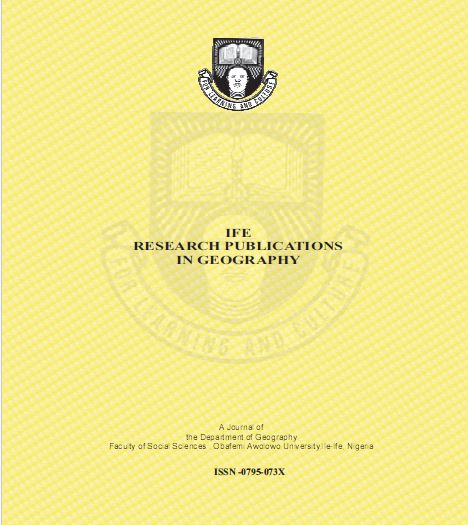The spatial distribution and accessibility to urban health facilities in Ilesa, Nigeria
Keywords:
Health, Transport and Planning ImplicationAbstract
The study examined the spatial distribution and accessibility of urban population to urban health facilities in southwestern Nigeria with specific reference to Ilesa, Osun state, Nigeria. Data for the study were of primary and secondary sources. The primary data were collected through the administration of questionnaires, field observations and the use of GPS. Multi-stage sampling procedure was used in the administration of the questionnaire. Firstly, the study area was divided into eleven (11) Traffic Analysis zones based on the 1,464 census enumerated area. In each traffic analysis zone, 2.5% of households were randomly selected for interview. Six hundred household questionnaires were administered to heads of selected households. Secondly, data were obtained from relevant literature and archival sources. Descriptive and inferential statistics were used to analyze the data.
The findings revealed that health facilities were not evenly distributed . This accounted for 54.1% of the health trip of the samples to be attracted by Ayeso zone. Congestion and over utilization of both human and physical resources at the specialist health facilities in this zone were experienced daily. The result of the analysis of variance further showed that there were significant variations in accessibility to health facilities among the sampled zones namely: transport cost (F=1.92, p<0.05), distance (F=5.43, p<0.05), availability of transport means (F=5.81, p<0.05) and travel time (F=8.37, p<0.05). The paper concludes by advocating for the upgrading of some of the public health facilities in certain zones to the status of General hospitals. Private health facilities should be encouraged by the government at the disadvantage zones. Further studies are needed to examine the human resource and material need of the existing health facilities in the study area, for effective planning and provision of qualitative health services to the urban population.




